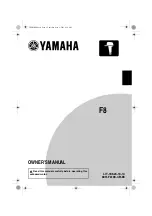System Development and Debugging
MPC885 PowerQUICC Family Reference Manual, Rev. 2
Freescale Semiconductor
53-17
•
Greater than or equal of the smallest unsigned number (0000...0).
•
Less than or equal of the maximum positive number in signed mode (0111...1).
•
Greater than or equal of the maximum negative number in signed mode (1000...).
These boundary cases do not require special support because they are considered always true. They can be
programmed using the ignore option of the load/store watchpoint programming. See
Section 53.5.1.5,
“Load/Store Support AND-OR Control Register (LCTRL2).”
53.2.5
Load/Store Breakpoint Example
CMPE and CMPF are used for load/store addresses while CMPG and CMPH are used for load/store data.
The procedure is as follows:
1. Write the value in the appropriate comparator register, CMPE, CMPF, CMPG, or CMPH.
2. For load/store data, program the operand size in LCTRL1[CSx] and the byte mask in
LCTRL1[CxBMSK].
3. Write the comparison type in LCTRL1[CTx]. For load/store data, program whether the operand is
signed or unsigned LCTRL1[SUSx].
4. Select a watchpoint enable event:
— Define the load/store watchpoint event in LCTRL2[LWxLA] or LCTRL2[LWxLD]
— Enable the address or data event in LCTRL2[LWxLADC] or LCTRL2[LWxLDDC]
5. Disable instruction events affecting load/store watchpoints—Clear LWxIADC (LWxIA is a don’t
care).
6. Enable the watchpoint in LCTRL2[LWxEN].
7. Enable a trap on every watchpoint or every N watchpoints.
Option: Enable trap on every load/store watchpoint in LCTRL2[SLWxEN] or on every N
watchpoints in COUNTx. (Set CNTV to n and select the load/store watchpoint in CNTC).
8. Select whether breakpoints are maskable or nonmaskable in LCTRL2[BRKNOMSK].
9. Optionally select whether a load/store trap causes the debug mode to be entered in
DER[LBRKE].
53.3
Development System Interface
It is often useful to debug a target system without making changes. However, sometimes it is impossible
to add load to the lines connected to the existing system without disrupting its operation. The development
system interface of the core enables debug of a target system with minimal cost and intrusiveness.
The development system interface of the core uses the development port, which is a dedicated serial port
and, therefore, does not need any of the regular system interfaces.
The development port is a relatively inexpensive interface that allows a development system to operate in
a lower frequency than the core’s frequency and controls system activity when the core is in debug mode.
Summary of Contents for PowerQUICC MPC870
Page 98: ...MPC885 PowerQUICC Family Reference Manual Rev 2 I 4 Freescale Semiconductor ...
Page 118: ...MPC885 Overview MPC885 PowerQUICC Family Reference Manual Rev 2 1 20 Freescale Semiconductor ...
Page 158: ...The MPC8xx Core MPC885 PowerQUICC Family Reference Manual Rev 2 3 18 Freescale Semiconductor ...
Page 288: ...MPC885 PowerQUICC Family Reference Manual Rev 2 III 4 Freescale Semiconductor ...
Page 554: ...MPC885 PowerQUICC Family Reference Manual Rev 2 V 6 Freescale Semiconductor ...
Page 1090: ...UTOPIA Interface MPC885 PowerQUICC Family Reference Manual Rev 2 43 8 Freescale Semiconductor ...
Page 1312: ...Byte Ordering MPC885 PowerQUICC Family Reference Manual Rev 2 A 8 Freescale Semiconductor ...
Page 1336: ...MPC885 PowerQUICC Family Reference Manual Rev 2 D 16 Freescale Semiconductor ...
Page 1358: ...MPC885 PowerQUICC Family Reference Manual Rev 2 D 38 Freescale Semiconductor ...
Page 1370: ...MPC880 MPC885 PowerQUICC Family Reference Manual Rev 2 E 4 Freescale Semiconductor ...
Page 1386: ...Revision History MPC885 PowerQUICC Family Reference Manual Rev 2 I 2 Freescale Semiconductor ...


















